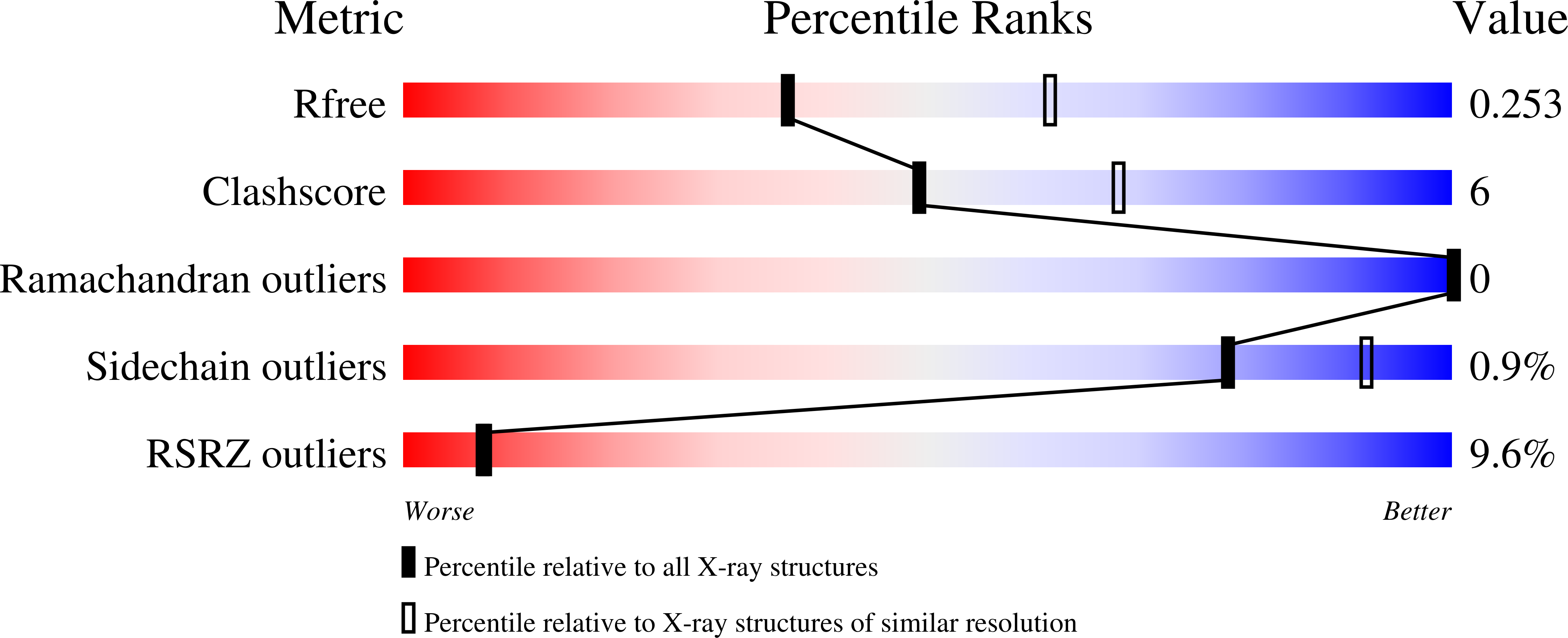N-glycan Utilization by Bifidobacterium Gut Symbionts Involves a Specialist beta-Mannosidase.
Cordeiro, R.L., Pirolla, R.A.S., Persinoti, G.F., Gozzo, F.C., de Giuseppe, P.O., Murakami, M.T.(2019) J Mol Biol 431: 732-747
- PubMed: 30641082
- DOI: https://doi.org/10.1016/j.jmb.2018.12.017
- Primary Citation of Related Structures:
6MOY, 6MP2, 6MP7, 6MPA, 6MPC - PubMed Abstract:
Bifidobacteria represent one of the first colonizers of human gut microbiota, providing to this ecosystem better health and nutrition. To maintain a mutualistic relationship, they have enzymes to degrade and use complex carbohydrates non-digestible by their hosts. To succeed in the densely populated gut environment, they evolved molecular strategies that remain poorly understood. Herein, we report a novel mechanism found in probiotic Bifidobacteria for the depolymerization of the ubiquitous 2-acetamido-2-deoxy-4-O-(β-d-mannopyranosyl)-d-glucopyranose (Man-β-1,4-GlcNAc), a disaccharide that composes the universal core of eukaryotic N-glycans. In contrast to Bacteroidetes, these Bifidobacteria have a specialist and strain-specific β-mannosidase that contains three distinctive structural elements conferring high selectivity for Man-β-1,4-GlcNAc: a lid that undergoes conformational changes upon substrate binding, a tryptophan residue swapped between the two dimeric subunits to accommodate the GlcNAc moiety, and a Rossmann fold subdomain strategically located near to the active site pocket. These key structural elements for Man-β-1,4-GlcNAc specificity are highly conserved in Bifidobacterium species adapted to the gut of a wide range of social animals, including bee, pig, rabbit, and human. Together, our findings uncover an unprecedented molecular strategy employed by Bifidobacteria to selectively uptake carbohydrates from N-glycans in social hosts.
Organizational Affiliation:
Brazilian Bioethanol Science and Technology Laboratory (CTBE), Brazilian Center for Research in Energy and Materials (CNPEM), Campinas, SP, Brazil; Graduate Program in Functional and Molecular Biology, Institute of Biology, University of Campinas, Campinas, SP, Brazil.















